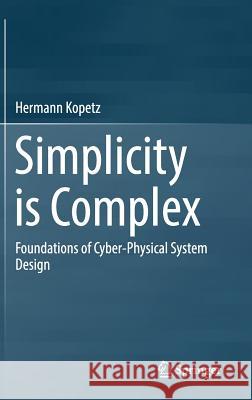Simplicity Is Complex: Foundations of Cyber-Physical System Design » książka
topmenu
Simplicity Is Complex: Foundations of Cyber-Physical System Design
ISBN-13: 9783030204105 / Angielski / Twarda / 2019 / 148 str.
Simplicity Is Complex: Foundations of Cyber-Physical System Design
ISBN-13: 9783030204105 / Angielski / Twarda / 2019 / 148 str.
cena 563,56
(netto: 536,72 VAT: 5%)
Najniższa cena z 30 dni: 539,74
(netto: 536,72 VAT: 5%)
Najniższa cena z 30 dni: 539,74
Termin realizacji zamówienia:
ok. 22 dni roboczych
Dostawa w 2026 r.
ok. 22 dni roboczych
Dostawa w 2026 r.
Darmowa dostawa!
Kategorie:
Kategorie BISAC:
Wydawca:
Springer
Język:
Angielski
ISBN-13:
9783030204105
Rok wydania:
2019
Wydanie:
2019
Ilość stron:
148
Waga:
0.40 kg
Wymiary:
23.39 x 15.6 x 1.12
Oprawa:
Twarda
Wolumenów:
01
Dodatkowe informacje:
Wydanie ilustrowane











